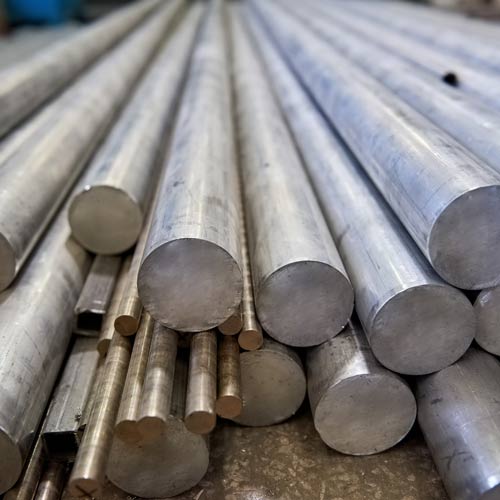The rising cost of raw materials is causing problems for SMEs, but there are steps they can take to mitigate these challenges.
For Britain’s battling SMEs, there are few rawer nerves than the rocketing cost of raw materials. A rapid succession of major disruptive phenomena – Brexit, Covid, energy inflation, geopolitical conflict – has dislocated raw materials sourcing, caused shortages and stockpiling, and repercussed through the length of supply chains across vertical sectors.
Bigger businesses may be able to withstand the price fluctuations by absorbing unanticipated costs against profits, and use their commercial clout to strike better deals with suppliers.
But SMEs have much less room for manoeuvre. They have to pay going-market prices, with little option to pass on extra costs to their cash-strapped customers. It’s a predicament that’s left SMEs compelled to find new ways to remake their terms of business.
“Margins at many small businesses are under enormous pressure, and in most cases, there is no good option for relieving that pressure,” reports Martin McTague, National Chair at the UK Federation of Small Businesses (FSB). “Reducing output or product lines, or cutting staffing levels, will only help so much. At a certain point many SMEs will be forced to raise their own prices, risking customer goodwill and ratcheting-up inflation more generally.”
Growth x shortages = higher costs
Raw materials cost increases have come as UK SMEs are still struggling to restabilise their finances following the ructions of Covid. The pandemic itself was the impetus behind instructive examples of its direct and indirect impact on raw materials pricing.
Take packaging. In 2020, internet retailing zoomed through five years of normal growth in a matter of months.
The upturn in sales might have been enlivening for UK e-tailers large and small. But the escalation in online ordering also placed massive demands on producers of packaging materials, such as corrugated cardboard, used to encase home deliveries.
Demand for other kinds of shipping protection – bubble wrap, air bags, sticky tape – placed strain on supplies of the polymers that go into their making.
Sector-specific impacts
Certain sectors are more exposed to rising raw materials costs than others. FSB Voice of Small Business Index research from Q4/2021 found that 27% of manufacturing businesses and 23% of construction businesses said their costs had ‘significantly increased’ over the previous three months, while only 10% of professional, scientific and technical businesses experienced the same thing.
Businesses in the manufacturing and construction sectors are hit hardest by escalating energy prices and by the war in Ukraine, according to John Pickervance, Partner & Head of Commercial at Forbes Solicitors.
“These businesses and their suppliers tend toward high-energy consumption, and the increased costs are being flowed down the supply chain,” Pickervance says. “Raw materials like timber are in short supply. Consequently, its cost continues to spiral upwards, with demand remaining high. The price of wood-made furniture has increased by 17% in the past 12 months due to manufacturers being unable to absorb all [raw materials] price increases.”
Volatile materials prices are “baking uncertainty” into small businesses’ outlook, warns Martin McTague at the FSB, with supplier quotes valid for a much shorter period – from two months down to two weeks, in some instances. “Suppliers are facing huge logistical challenges, from backlogs at ports to longer shipping times, with escalating fuel costs on top,” he says. “Keeping a keen eye on inventory, and factoring longer lead times into production plans, will help mitigate the problem.”
Forbes’ Pickervance agrees: “Longer lead times are likely to stay for the foreseeable future. As a result, many businesses are now experiencing cashflow problems through not completing projects in the same timescales.”
Pickervance adds: “We’re seeing this across a wide variety of sectors, particularly within the construction industry, where construction companies are pushing suppliers to the limits – and sometimes beyond – of their credit terms to combat the issue.”
Contractual re-evaluation could help
Businesses should carefully consider and re-evaluate the terms on which they trade with their suppliers and customers, says Pickervance. “Long-term framework agreements are an ideal way of achieving this,” he explains. “It’s important for businesses to formulate a rigorous strategy to avoid surges in raw material costs. For instance, each supplier contract should include gross and net weights for materials, and they should also include a cost basis with index, market-based or published prices.”
Raw materials price inflation also heightens the risk of under-insurance. Say an SME in metal processing has a stock of steel that’s insured to a value of £15k, but due to price rises, is now worth £25k. If that stock was to be damaged or lost, then their policy would only pay out the £15k. So, SMEs should regularly review the value of their insurable stocks and adjust policy values accordingly.
Price stability frameworks
A way for companies to ensure the cost prices of raw materials will stay the same for a period, Pickervance points out, is by agreeing on fixed prices under a framework for a specific period between the company and the suppliers for the raw materials.
“This would mean that for a set period, the cost of raw materials would be the standard price agreed,” says Pickervance, “and there would not be any fluctuation in the costing.”
He adds: “It could be incorporated within the agreement that suppliers could only have the chance to increase the costing price periodically after review – or where their own costs are increased beyond a set percentage – and will be subject to certain limits already agreed between the companies, such as with reference to percentages or indices.”
